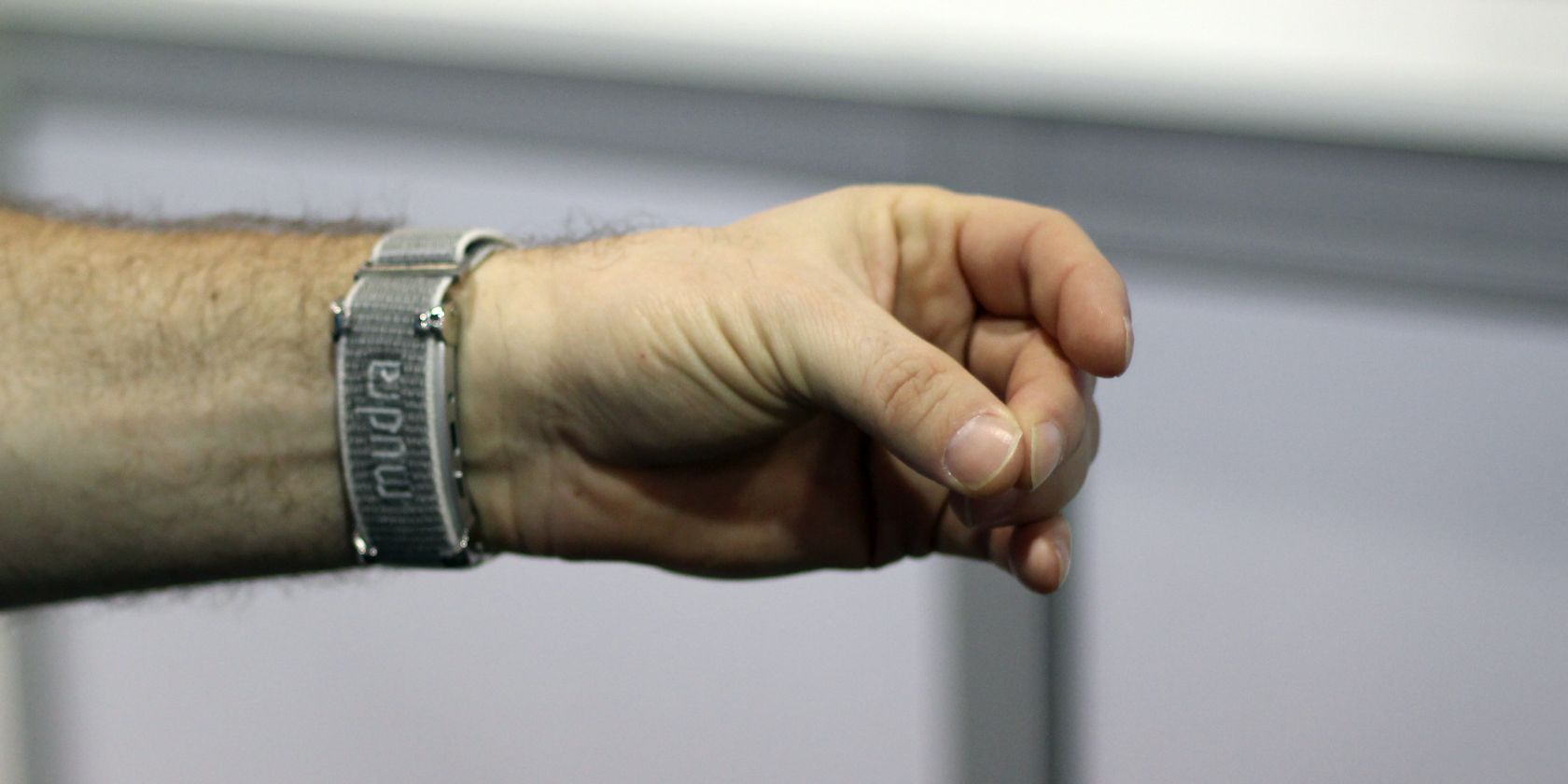
The Mudra wearable mouse and media remote can control your devices with a wave of the hand or pinch of the fingers. Unlike other wearable control devices that convert hand motion into cursor movement, the Mudra Mouse uses a relatively unused approach called SNC. SNC is like electrocardiography except that it measures the electrical impulses that travel between the wearer’s brain to their hand.

The Mudra comes equipped with a range of conductive sensors. These conductive pieces of metal function like the ECG sensors on the Apple Watch. In other words, the Mudra measures surface-of-the-skin electrical impulses running through the wearer’s wrist. After measuring those impulses, the Mudra then uses deep-learning algorithms to turn the analog wave forms into binary inputs, such as left or right-mouse clicks, scrolling, changing songs, and more.
For example, if you wear the mouse and want to left-click, the user makes an okay-sign with their fingers. By going through the mental processes to form a sign-language letter F, the Mudra software instantiates a left-click. Users than make a pinching motion in the air and then drag their hand. In the Windows operating system, this means that the user has clicked and dragged.

If the Mudra does launch in 2020, it would enter a market with little competition. As of January 2020, only a handful of wireless (but not Bluetooth) competitors exist: the now ancient Mycestro. The Mycestro does not allow for Bluetooth pairing, although it uses Bluetooth as its underlying wireless connection standard. If the Mudra ever releases, it will enter an almost empty market with the Mycestro mouse (our Mycestro mouse competitor) as the only competitor. (There is a knock-off of the Mycestro that sells on Amazon and from other retailers, but I would not recommend it.)
In 2020, the Padrone Ring mouse might have relaunched its rescinded 2019 Kickstarter campaign. According to Padrone Ring founder Marc Speck, there remain a few technical issues that need to be solved before they can produce the ring. The device may appear at Mobile World Congress in 2020 but nothing is yet certain.
The Tactigon Skin offers a similar degree of functionality to the Mudra Mouse, except it uses a combination of sensors ranging from an accelerometer to a gyroscopic sensor. Like the Mudra Mouse, the Tactigon Skin claims to offer a number of applications to real-world devices. One unique use case is as a control device for drones and other remote-control devices. However, the Tactigon Skin hasn’t released yet and may still be vaporware. It was successfully funded though.
The downside of the technology behind all sensor-based mouse-like input devices is battery life. Because wearable, “air mice” (because they function in the air) require constant sensor readings, it also consumes a great deal of power. And because the devices are wearable, they require light batteries. The combination of high drain with light batteries results in, unfortunately, short battery life. Whether we see Mudra’s technology in smartphones may rest entirely on refinements that improve on power consumption.
Read the full article: Mudra Mouse: Wearable Bracelet Gesture Mouse
from MakeUseOf https://ift.tt/2T3r0lr
via IFTTT

0 comments: